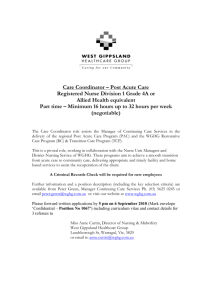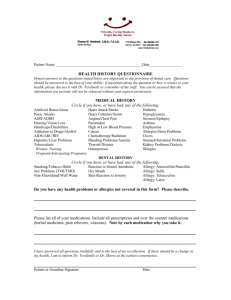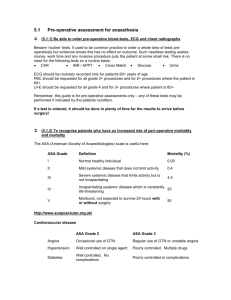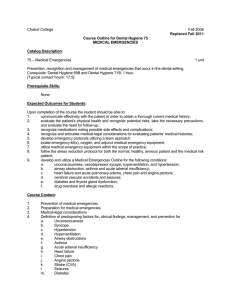MEDICAL EMERGENCIES LECTURE 1 FOR 3RD YEAR
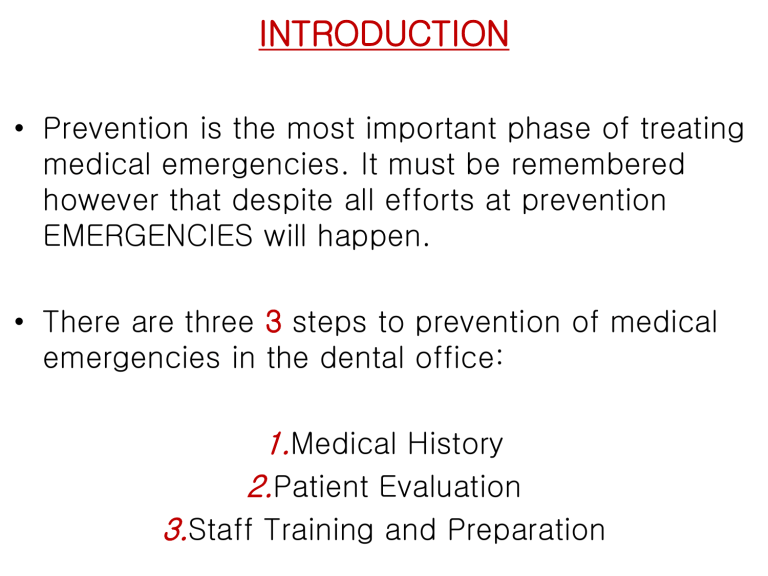
INTRODUCTION
• Prevention is the most important phase of treating medical emergencies. It must be remembered however that despite all efforts at prevention
EMERGENCIES will happen.
• There are three 3 steps to prevention of medical emergencies in the dental office:
1.
Medical History
2.
Patient Evaluation
3.
Staff Training and Preparation
TYPES OF EMERGENCY
• ALTERED CONCIOUSNESS
• CARDIOVASCULAR
• ALLERGY
• RESPIRATORY
• SEIZURES
• DIABETIES RELATED
Management Of Medical Emergencies
• Recognition
• Prevention
• Preparation
• Basic life support (BLS)
• Cardiopulmonary resuscitation (CPR)
• Specific medical emergencies
Specific medical emergencies
Prevention / patient evaluation
• Medical History
• Physical Evaluation of the related organ system
• Vital Signs
• Dialogue History
• Determination of Medical Risk
• Stress Reduction
MEDICAL HISTORY
• General state of health
• Current medications
• Particular conditions like CHD, prosthetic valve
• Drug allergy (penicillin)
• Bleeding tendency HEMOPHILIA
• Immunodeficiency HIV
a) Are there any recent changes to health?
b) Is the patient under the care of a physician?
c) Has the patient had any serious illness / surgery d) Does the patient have any allergies?
e) Is the patient taking any drugs or medications? f) Is the patient pregnant?
ASA Physical Status Classification
DETERMINATION OF MEDICAL RISK/RECOGNTION
Class1: Healthy patient with no systemic disease.
Class 2: Mild Systemic disease with no limits on activity.
Class 3: Severe systemic disease that limits activity.
Class 4: Incapacitating systemic disease that is life threatening.
Class 5: Moribund.
ASA I
• A patient without systemic disease
• A normal healthy patient
• Can tolerate stress involved in dental treatment
• No added risk of serious complications
• Treatment modification usually not necessary
ASA II
• A patient with mild systemic disease
• Example:
-Well-controlled diabetic
-Well-controlled asthma
-ASA I with anxiety
• Represent minimal risk during dental treatment
• Routine dental treatment with minor modifications
-Short early appointments
-Antibiotic prophylaxis
-Sedation
ASA III
• A patient with severe systemic disease that limits activity but is not incapacitating.
• Example:
- a stable angina
- 6 mos. Post - MI
- 6 mos. Post - CVA
- COPD
• Elective Dental Treatment is not Contraindicated
• Treatment Modification is Required
- Reduce Stress
- Sedation
- Short Appointments
ASA IV
• A patient with incapacitating systemic disease that is a constant threat to life
• Example:
- Unstable angina
Elective dental care should be postponed
- M I within 6 months
Emergency dental care only
- CVA within 6 months
Rx only to control pain and infection
Other treatment in hospital
- BP greater than 200/115
(I&D, extraction)
- Uncontrolled diabetic
ASA V
• A morbid patient not expected to survive
• Example:
- End stage renal disease
- End stage hepatic disease
- Terminal cancer
- End stage infectious disease
• Elective treatment definitely contraindicated
• Emergency care only to relieve pain
STRESS REDUCTION / PREVENTION
• Premedication
• Sedation
• Pain control (intra and post-op)
• Early appointments
• Short appointments
• Monitor vital signs
PREPERATION a) Training: Staff needs to have the knowledge to identify and correctly manage each emergency.
b) Easily accessible emergency equipment & drugs c) Coordination of office personnel “team Effort” d) BLS for all office personnel e) CPR for all office personnel f) Emergency drills g) Emergency phone numbers (911) h) Emergency equipment
Basic Principle of Managing all
Medical Emergencies
1. BLS: remember ABC’s
2. Place the patient supine.
3. Call for assistance.
4. Assure patient if conscious.
5. Maintain airway.
6. Place patient on Oxygen as indicated by nature of emergency.
7. Monitor vital signs.
8. Diagnose nature of event.
9. Initiate specific treatment.
10. Document.
PABCD
• P = Positioning
• A = Airway
• B = Breathing
• C = Circulation
• D = Definitive treatment
Emergency Equipment
• Tourniquets
• Syringes
• Suction
• Bag valve mask
• Oropharyngeal and nasopharyngeal airways laryngoscope and endotracheal tubes
• Normal saline 0.9%, 1000 cc bags
• 18-and 20-gauge angiocatheters
• Yankauer suction tip .
• Cricothyroidotomy sets
• Portable oxygen system-E cylinder size
• Stethoscope
• Sphygmomanometer-child and adult sizes
• Emergency back-up suction unit-venturi operated suction attached to oxygen system tape
• EKG/defibrillator
• Pulse oximeter
• Sterile water for injection
EMERGENCY DRUGS
EPINEPHRINE
- To treat cases of acute allergic reaction
- Acute asthmatic attack
DOSE = 0.3 mg of 1:1000 for adult
0.15mg of 1:1000 for children-IV
- Management of cardiac arrest – DOSE = 1:10000-IV
Chlorpheniramine (Histamine Blocker)
M/o delayed-onset allergic reactions
Diphenhydramine
Definitive m/o acute allergic reaction
As Local anesthetics when the patient has h/o allergy to LA
Nitroglycerine (vasodilator)
• Chest pain
• Definitive m/o angina pectoris
• Early m/o acute myocardial infarction
• M/o acute hypertensive episodes
Albuterol (salbutamol)
• Bronchodilator
• To treat bronchospasm (acute asthmatic episodes)
• Allergic reactions with bronchospasm
Midazolam & Diazepam (Benzodiazepine)
USES
• To treat prolonged seizures
• Local anesthetic induced seizures
• Hyperventilation
• Thyroid storm
Flumazenil (benzodiazepine antagonist)
• Reduce the duration of anterograde amnesia associated with midazolam (from 121 min to 91 min)
• Use to reverse benzodiazepines anesthesia
Morphine sulphate (Opioid agonist)
USES
• Intense, prolonged pain or anxiety.
• Acute myocardial infarction and
• Congestive heart failure
Naloxone
• Acute morphine poisoning
• Use in opioid induced depression, including respiratory depression
Methoxamine (Vasopressor)
• To manage hypotension
• Syncope reactions
A- phenylephrine (α receptor agonist)
• Drug overdose reactions
• Post seizure states
• Acute adrenal insufficiency
• Allergy
Esmolol (β1 adrenergic blocker) OR propranolol
• Acute hypertensive episodes
• Supra ventricular tachycardia
• Episodic atrial fibrillation
• Arrhythmia during anesthesia
Hydrocortisone sodium succinate
• Definitive m/o acute allergy
• Rx of acute adrenal insufficiency, shock, status asthmatics
Atropine (Anticholinergic)
• To treat bradycardia
• Haemodynamically significant brady dysrhythmias
Aromatic ammonia (respiratory stimulant)
• Used for Rx respiratory depression
Nifedipine ca channel blocker
• Hypertension
• Acute anginal pain
Dextrose, 50% Solution (Glucagon)
• hypogylcemia
Lidocaine (xylocaine)
• LA and anti-dysrhythmic
Dopamine
• To treat haemodynamically significant hypotension in the absence of hypovolemia
Aspirin (Antiplatelet)
Used in patient with suspected
• myocardial infarction
• unstable angina


